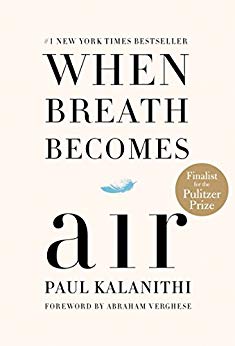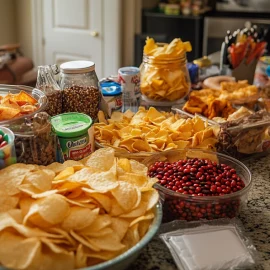

This article is an excerpt from the Shortform summary of "When Breath Becomes Air" by Dr. Paul Kalanithi. Shortform has the world's best summaries of books you should be reading.
Like this article? Sign up for a free trial here .
Have you ever wondered: what is medical school like? Are there first-person perspectives that capture the pressures and high stakes learning environments?
Paul Kalanithi’s memoir details his journey through medical school, through his cancer diagnosis. In When Breath Becomes Air, Paul discusses his journey to becoming a doctor, including a firsthand answer to the question, what is medical school like?
Shortform note: This article and When Breath Becomes Air summary is written in a way that allows you to share in the experience provided by the memoir.
Simply reading about the content of the story seems insufficient in expressing the emotional journey. To really provide you with the sensation this book creates, we wrote in the first person, using a voice similar to his. We highly recommend reading the original book for the full experience. Reading the words coming directly from him is a powerful experience we can’t replace.
Changing Perspective: Medical School and Lessons on Life
Shortform note: What is med school like? Paul wondered this too, when he made the difficult decision to pursue medical school. When you ask, “What is medical school like?”, you’re likely wondering about the in-person interactions and dealing with patients as well as classes. Through the pressures of medical school, Paul continued to develop his philosophies on life and death, and his role as a doctor as it relates, and answers his own question regarding what is medical school like.
There’s no way to truly capture the essence of what dissecting your first cadaver is like. Every medical student must traverse through this choppy terrain between life and science. In front of you lies a human that once housed a mind, meaning, breath, and dreams. Yet, at the same time, you see a mere specimen that you will carve up over a period of months to further your educational agenda. The pendulum swings between disgust and misconduct and inspiration and excitement. Eventually, the humanity is drained from you until all that is left is the cold, hard, pitiless face of knowledge and proficiency.
For me, anchored in a pursuit of morality and meaning, this dichotomy was difficult. I found I would often inflate the morose details of anatomy work to friends so I could feign emotion, despite the antithetical reality of how I felt in class.
Still, at times, I couldn’t help but remember that this mass of muscles, cells, and organs had once been a life, even if that remembering was only an admission of disregard. All doctors must draw this line between life and science. The invasion of the body and individuality, the things that are sacred to humans, is what practicing medicine is all about. Thus, the body becomes a mere tool and human suffering the mode of operation. Anatomy class was the vessel that changed us from empathic souls to hardened professionals.
In those first two years of med school, I saw how simple it was to view the work as merely that—work. But with the help of my girlfriend, Lucy, I came to see that every aspect of science correlated with an aspect of life. A wavy line on an EKG wasn’t just a heartbeat, it was life coursing through a body.
My comprehension of life, death, and meaning was sharpening. I recognized that the human relationality I’d pondered so often during my previous studies was exemplified in the relationship between doctor and patient.
It occurred to me that a keen knowledge of medicine wasn’t sufficient. I would have to gain wisdom, or a moral intelligence, to walk that fine line between life and death.
I opted to choose neurosurgery, one of the most demanding specialties there is. My decision was motivated by an experience I had witnessing a pediatric neurosurgeon discussing a child’s tumor with his parents. I listened as he transitioned from physician, detailing the medical implications, to companion, respecting the personal, moral implications and guiding them through their fears.
This field would not only force me to confront the questions I’d been asking since undergrad, but also place me squarely in the space where the answers could be found.
Residency and Lessons on Life and Death as a Doctor
Shortform note: Many aspiring doctors ask, “What is medical school like?” to get a sense of treating patients. Paul continued treating patients, and continued learning what it means to be a doctor in When Breath Becomes Air. It’s worth noting that Paul’s discovery of the answer to “What is medical school like?” informed his relationships with his patients, and later affected Paul’s relationship with his own oncologist, Dr. Emma Hayward, who undoubtedly also at some point wondered, what is med school like?
At first, residency seemed to be about paperwork. There were never-ending papers that needed to be pushed here or there, and I didn’t leave the hospital for two days. But I quickly learned to get through the paperwork more efficiently, until the never-ending stack only took an hour.
It was on a Tuesday that my first patient died.
I would experience many more deaths my first year of residency. Sometimes, I could manage all of it, taking it in as I took in everything else around me. Other times, the graveness of death became so heavy, I felt like I was drowning in the misery of it and the misery of all involved.
Neurosurgery was my avenue to understanding the intricacies of death as much as the connection between the brain and the mind. I’d thought being on the frontlines of death would change me, make me understand what it meant to live and begin living better. Certainly, if one is confronted with life and death decisions day in and day out, some sort of awakening must follow.
Instead, I started to wonder if my role as gatekeeper was normalizing the scenario. Or, perhaps, it was keeping me at a safe distance from the battle, like a general atop a horse on a hill. I was around death, near dying patients. I was there to witness their greatest moment of grief and suffering. But I wasn’t fighting next to them—just organizing and observing the fight. My life went on the same. I was forming relationships with others on the outskirts, bonding over our duties to the dying. I had found a way to adapt my baseline of normalcy to the environment around me.
I had failed to recognize the significance of the situation and their lives. I was turning into Tolstoy’s cliche of a doctor: mechanically treating disease without noticing the individual.
Human relationality was once of great importance to me, but I had forgotten it amid the harried world of diagnosis and prognosis. It wasn’t sufficient to just be an excellent surgeon. I had to be an excellent physician, which meant guiding those in my care, including families, to a place where tragedy can be comprehended.
This role, the pastoral one, became my highest priority, for often the families are equally blinded to delicate facets of life and death. They look at their sick or injured loved one and see the person they were, the life they lived, and the memories they shared. It was a sight of the past, whereas I understood the realities of the future.
I felt this type of work was particularly important for the neurosurgeon, because brain injuries, more than most, confound reason. The body can still be alive with the help of machines—the chest still moving up and down, blood still circulating—even when the patient is brain-dead. Death with a beating heart is not an easy concept to take in.
I became chief resident my final year, which meant more responsibility, and not just on my cases. The bar for success had been raised, and conversely, so had the ramifications of failure. Everything I had learned, technically and personally, were wound together. All of it carried a moral weight. The threshold between life and death, that narrow space, required dedication to my skills and to my patient’s identities. Whether to proceed with surgery or not dictated an appraisal of both.
I’d also learned that in the battle between life and death, there were other forces at play. We may be the gatekeepers, but we were also human.
We had to remember that death was an inevitability. Even if we were technically excellent. Even if we were morally considerate, sometimes people die, as we all will.
Understanding this unwavering fact doesn’t mean we are weak or not committed to our responsibilities. It simply means we understand what we are up against and continue to forge our way through despite it. We might not always win, but we keep trying regardless.
Shortform note: Though Paul Kalanithi initially did not want to become a doctor, he found that he was inspired to become one when his search for meaning in life cam up short. In many ways, Paul didn’t stop to ask himself, “What is medical school like?” He focused on patients and learning about the meaning and value of life. his answer to the question “What is medical school like?” provides insight into his life, and shows us his important beliefs and his values. This can help students understand the importance of going into medical school with a philosophy and open mind, even as early in the process of researching what is med school like.

———End of Preview———
Like what you just read? Read the rest of the world's best summary of Dr. Paul Kalanithi's "When Breath Becomes Air" at Shortform .
Here's what you'll find in our full When Breath Becomes Air summary :
- How Paul Kalanithi discovered he had cancer
- How Paul coped with his cancer until his very end
- How Paul's wife dealt with his death and found the strength to continue






